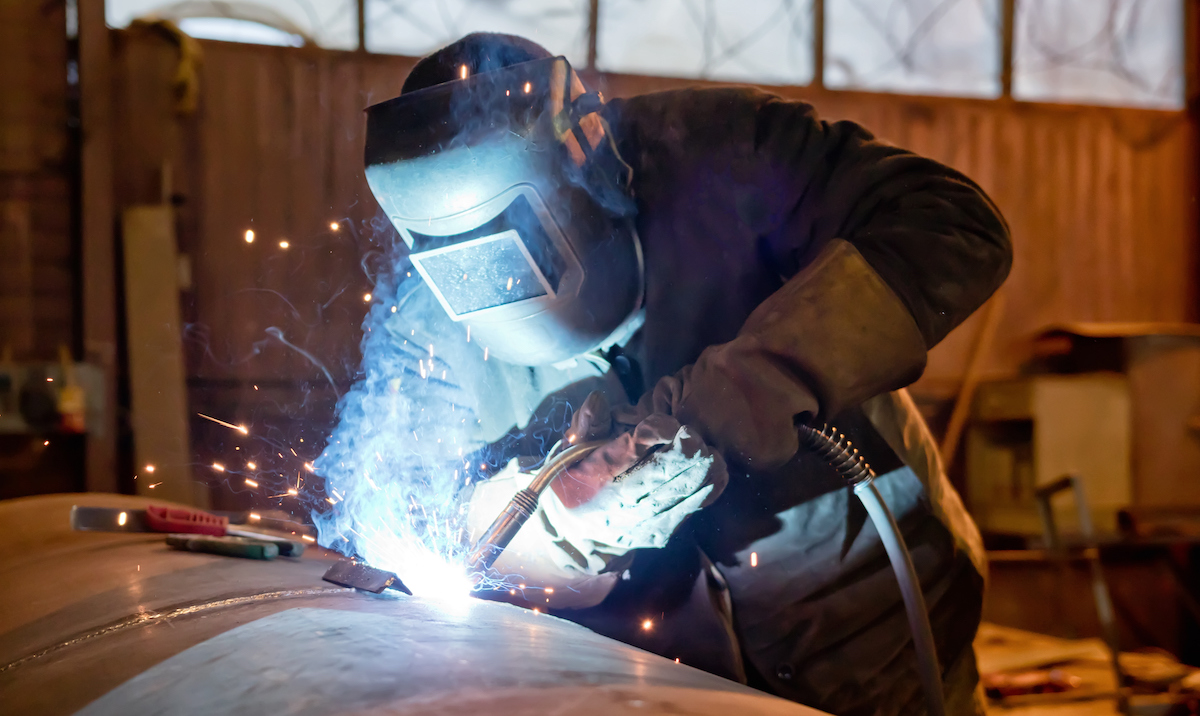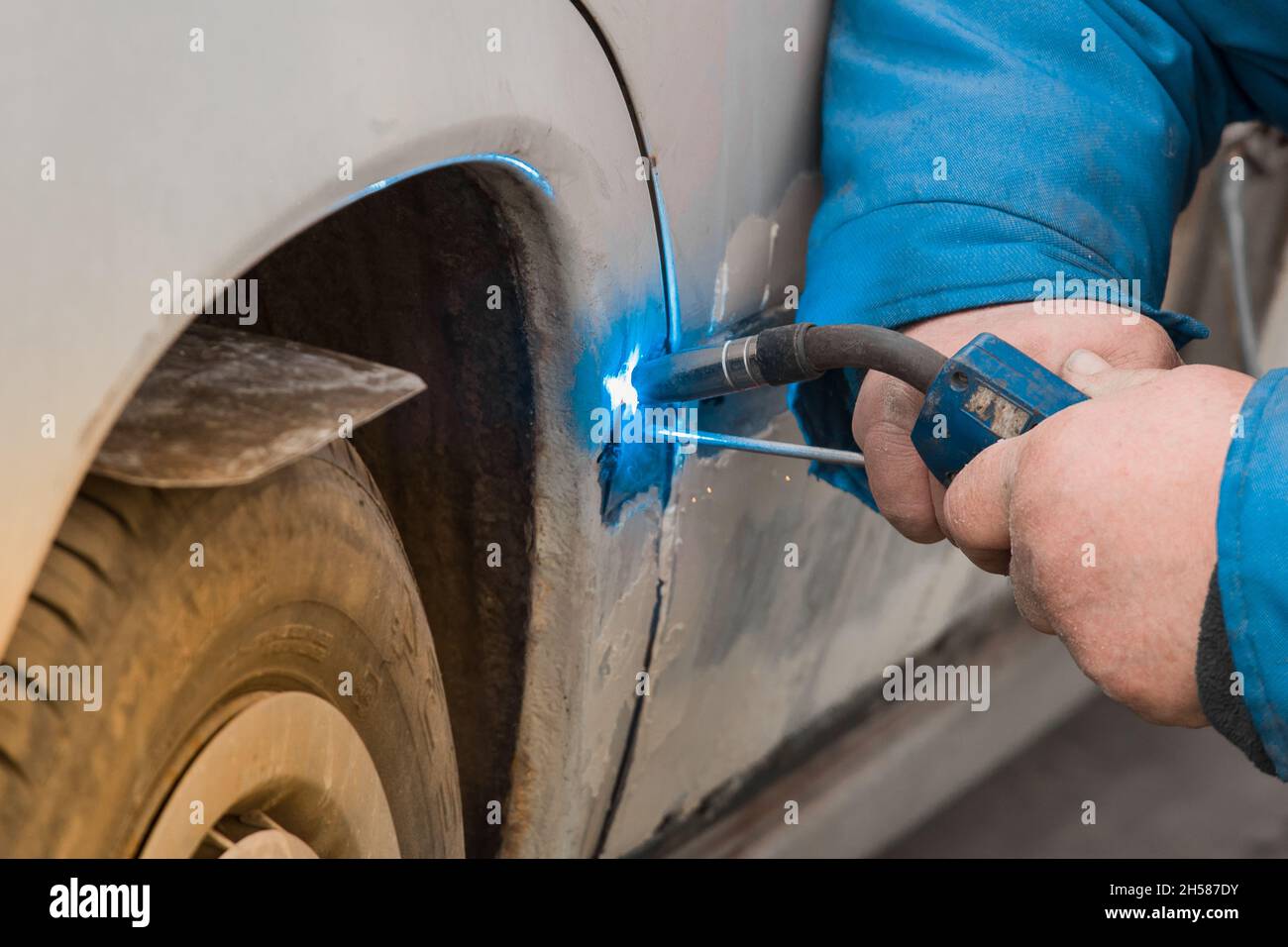All Concerning Welding: Trick Insights Into Techniques and Finest Practices for Success
Welding encompasses a variety of strategies, each matched for specific materials and applications. Understanding these techniques, such as GMAW, SMAW, and TIG, is necessary for accomplishing ideal results. The ideal tools and security techniques can not be overlooked. As prep work and repairing play important roles in the welding procedure, grasping these components can significantly boost the quality of the last product. What are the key aspects that assure an effective weld?
Understanding Different Welding Methods
Welding techniques encompass a variety of approaches, each fit to specific applications and materials. Among the most usual methods are Gas Steel Arc Welding (GMAW), Shielded Metal Arc Welding (SMAW), and Tungsten Inert Gas Welding (TIG) GMAW, additionally recognized as MIG welding, is preferred for its speed and flexibility, making it optimal for thin materials. SMAW, or stick welding, is preferred for its simpleness and effectiveness in outside environments, especially with thicker steels. TIG welding uses accuracy and control, making it ideal for elaborate job and non-ferrous metals (Montana Mobile Welding and Repair Belgrade Fabrication). Each strategy has its special benefits and factors to consider, permitting welders to choose the best technique based upon the task's needs, material type, and preferred results. Comprehending these techniques is crucial for effective welding
Important Welding Tools and Tools
While numerous welding methods require details skills, the ideal tools and devices are just as crucial for achieving high quality outcomes. Vital welding equipment consists of welding makers, which differ depending on the technique-- such as MIG, TIG, or stick welding. Safety gear, consisting of helmets, handwear covers, and aprons, guarantees safety and security and convenience throughout the process. Furthermore, components and clamps help secure materials in location, ensuring accuracy in welds. Consumables like welding poles, cable, and protecting gas are additionally crucial parts that influence the top quality of the weld. Tools such as cutters and grinders assist in surface prep work and post-weld completing, contributing to an expert outcome. Investing in top notch devices eventually boosts the efficiency and efficiency of welding tasks.
Security Practices in Welding
Proper safety methods are important in the welding sector to safeguard workers from prospective dangers. Welders need to use ideal individual protective equipment (PPE), consisting of safety helmets with proper shading, handwear covers, and flame-resistant clothing. Appropriate air flow is essential to decrease direct exposure to hazardous fumes and gases produced throughout the welding procedure. Furthermore, workers need to be trained in the correct handling of welding equipment to avoid mishaps. Fire precaution, such as maintaining combustible materials away from the welding area and having fire extinguishers conveniently available, are essential. Routine inspections of devices and offices can help recognize prospective threats before they cause mishaps. By adhering to these safety and security practices, welders can create a more secure working environment and lessen dangers related to their profession.
Preparing Materials for Welding
Preparing products for welding is a vital step that considerably influences the high quality and honesty of the last product (Montana Mobile Welding and Repair). Correct prep work includes cleaning the surface areas to eliminate contaminants such as dust, oil, and rust, which can jeopardize the weld. Techniques such as grinding, fining sand, or utilizing solvents are commonly utilized to achieve a tidy surface area. In addition, ensuring that the products fit together comfortably is essential; voids can cause weak welds. It's also crucial to take into consideration the placement and positioning of the elements, as this will certainly influence the convenience of welding and the final end result. Ultimately, picking the suitable filler product and making certain compatibility with the base metals is crucial for achieving strong, sturdy welds
Tips for Getting High-Quality Welds
Accomplishing top notch welds calls for attention to information and adherence to finest practices throughout the welding procedure. Proper joint prep work is crucial, guaranteeing surfaces are clean and free from contaminants. Selecting the proper filler material and welding strategy based on the base steels is crucial for excellent bonding. Keeping constant travel speed and angle while welding can advertise and prevent problems harmony. Additionally, controlling warmth input is crucial; excessive warm can bring about bending and deteriorated joints. If essential, routinely checking the welds throughout the process enables for immediate modifications. Employing proper post-weld treatments, such as cleaning and tension relief, can boost the sturdiness and integrity of the weld, eventually guaranteeing a successful outcome.
Troubleshooting Typical Welding Issues
Welding usually presents challenges that can impact the quality and integrity of the final item. Typical issues such as porosity, irregular weld grains, and overheating can develop, each calling for details repairing methods. Understanding these troubles is crucial for welders to improve their abilities and attain ideal outcomes.
Porosity Troubles Discussed
Although porosity can typically be ignored, it continues to be an essential Get More Info issue in welding that can endanger the honesty of an ended up item. Porosity refers to the visibility of little gas pockets within the weld grain, which can lead and compromise the joint to premature failing. This trouble normally emerges from contaminants, wetness, or improper shielding gas coverage throughout the welding process. To alleviate porosity, welders ought to validate that the base products are clean and dry, use proper securing gases, and maintain consistent welding parameters. Routinely examining the devices and setting can likewise assist recognize potential concerns before they manifest in the weld. Addressing porosity properly is important for accomplishing solid, resilient welds that meet high quality standards.

Inconsistent Weld Beads
Irregular weld beads can considerably influence the quality and stamina of a completed item. Various variables add to this concern, including incorrect traveling speed, incorrect amperage settings, and inconsistent electrode angles. When the welder relocates also promptly, a grain might appear slim and lack infiltration, while moving too slowly can trigger extreme accumulation. Additionally, using the wrong amperage can lead to either damaging or extreme spatter, both of which concession weld stability. The welder's method, such as inconsistent lantern movement, can additionally cause unequal bead appearance. To reduce these problems, welders need to focus on keeping steady, regulated activities and ensuring proper devices setups to achieve uniformity in their welds. Consistency is essential to achieving strong and trusted welds.
Overheating and Warping Issues
Extreme heat throughout the welding procedure can lead to substantial getting too hot and buckling concerns, affecting the structural honesty of the work surface. These issues commonly show up as distortion, which can endanger alignment and fit-up, making further assembly testing. Variables adding to overheating consist of the selection of welding criteria, such as voltage and travel rate, in addition to the kind of product being welded. To mitigate these issues, welders should maintain consistent traveling speed and proper heat input while keeping an eye on the workpiece temperature level. Furthermore, pre-heating or post-weld warm treatment can help ease stresses caused by rapid cooling - Montana Mobile Welding and Repair Belgrade. Regular examination and adherence to finest practices are important in stopping overheating and guaranteeing the durability and integrity of bonded frameworks
Often Asked Concerns
What Are the Job Opportunities in the Welding Industry?
The welding industry uses varied job opportunities, including settings as welders, educators, inspectors, and designers. Experts can function in production, building, aerospace, and vehicle sectors, benefiting from solid demand click this and competitive salaries in various functions.
How Can I Boost My Welding Speed Without Giving Up High Quality?
To enhance welding speed without compromising top quality, one need to practice reliable techniques, maintain tools, optimize settings, and boost hand-eye coordination. Routine training and seeking feedback can additionally significantly add to achieving quicker, top quality welds.
What Qualifications Are Readily Available for Welders?
Many accreditations exist for welders, consisting of those from the American Welding Society (AWS), the National Center for Building Education And Learning and Research (NCCER), and different industry-specific companies. These credentials improve employability and show skill effectiveness.
Just How Does Welding Influence the Characteristics of Metals?
Welding affects the residential or commercial properties of metals by changing their microstructure, which can bring about modifications in hardness, stamina, and ductility. Heat input and air conditioning rates throughout the procedure considerably impact these material features.
Can I Weld Dissimilar Metals Together?
